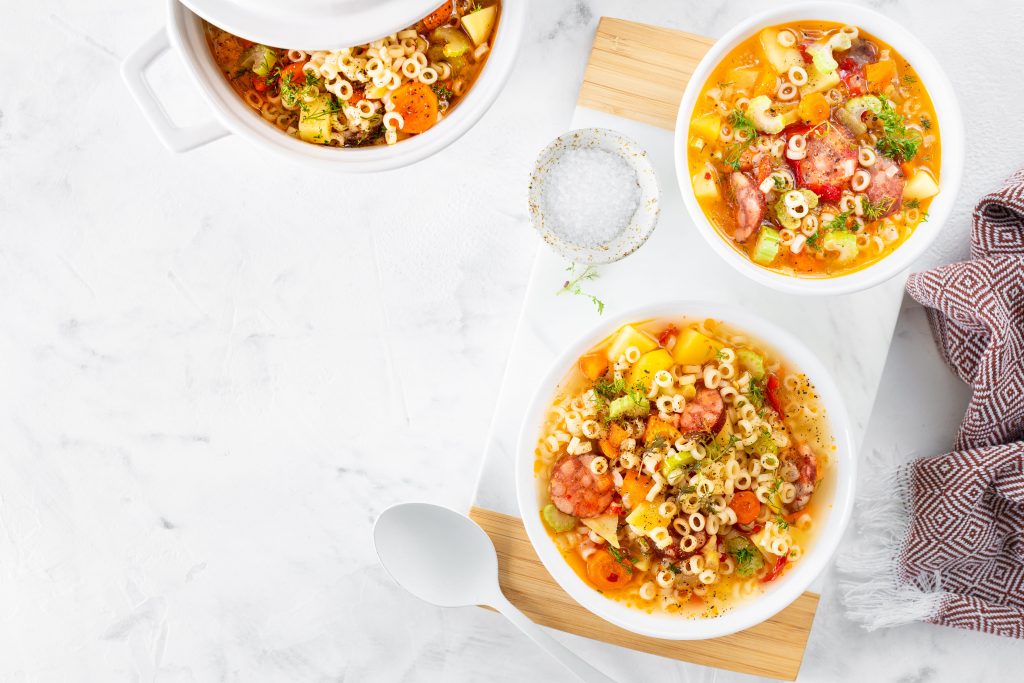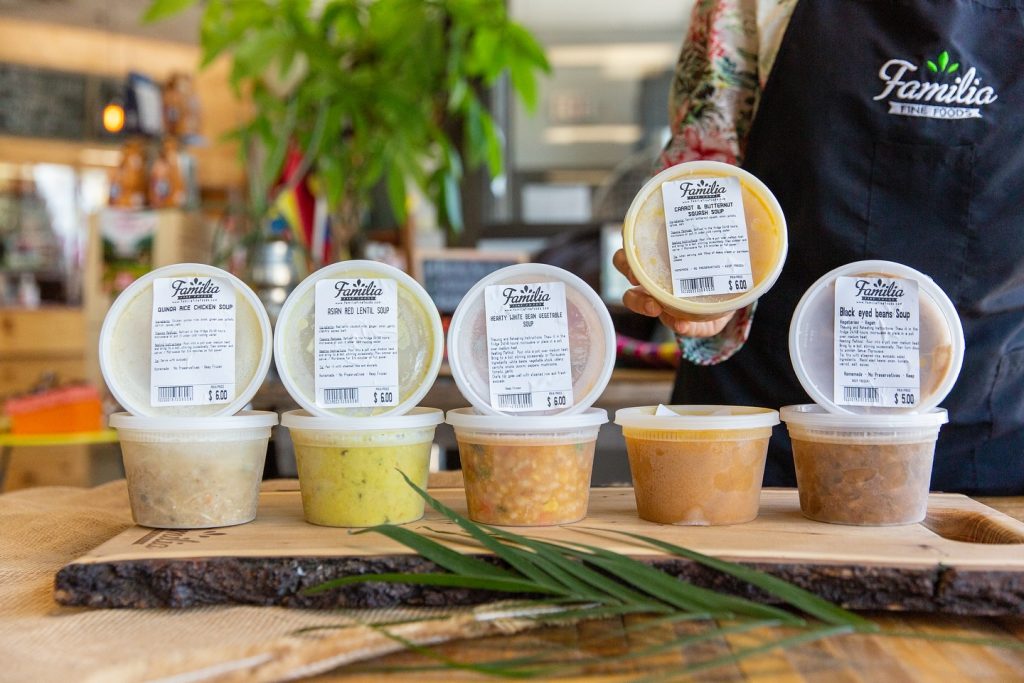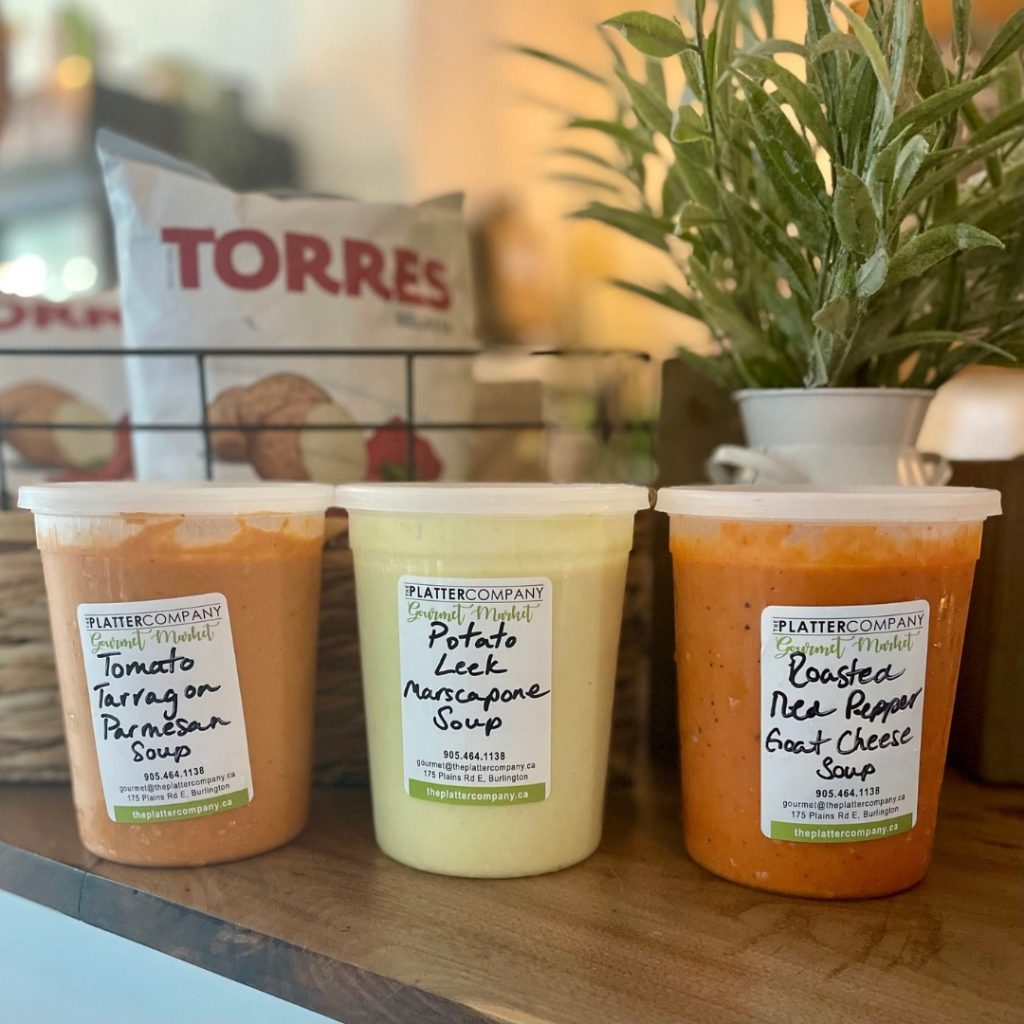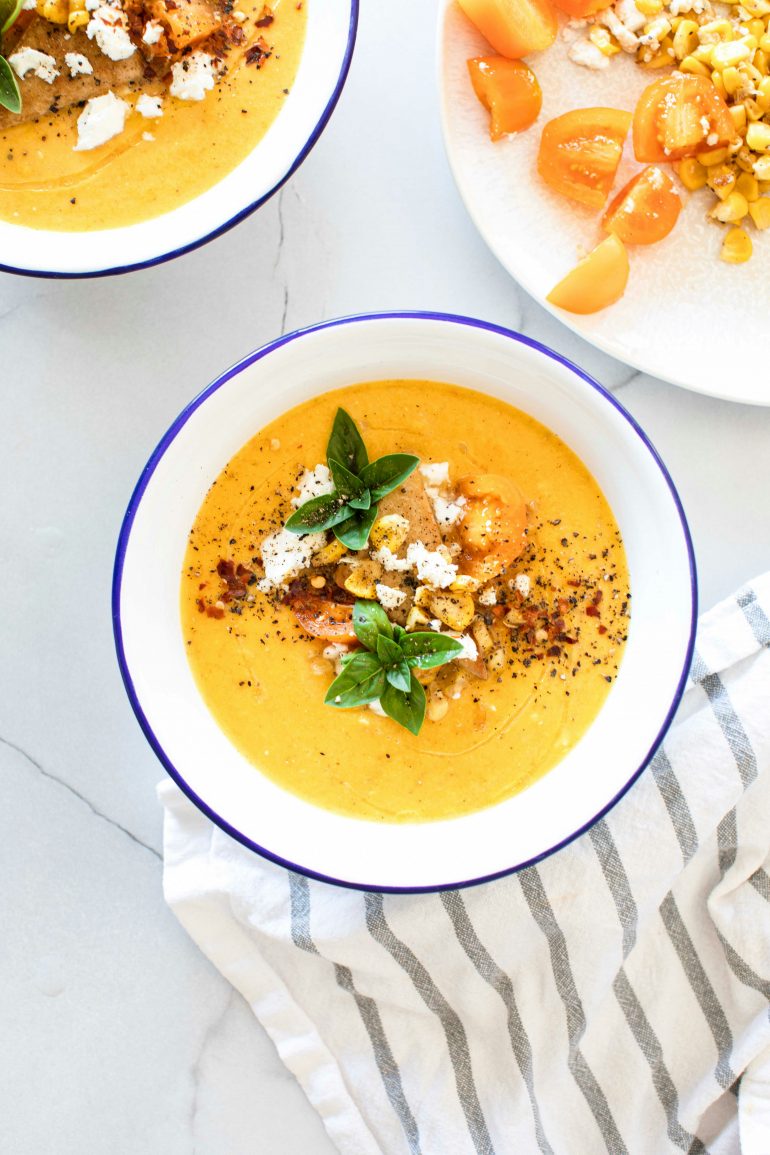People tend to romanticize soup. It’s the ultimate comfort food, they say. So warm and hearty. Good for what ails you. Like a hug in a bowl. Personally, I’ve never understood all this fuss over liquid food.
I consider myself a decent cook who’s big on flavour, but here’s my awful confession: I make boring soup. I cannot tell you how many times I’ve dumped an entire pot of it.
I do get the appeal of food that’s hot, soothing, economical and nutritious. The thing is, I want more than small morsels floating in bland broth. I want my soup to thrill my tastebuds. So, I have reached out to two celebrated food establishments for guidance.
No shortcuts
“What do soup-makers commonly do wrong?” I ask Luis Velasquez, Executive Chef and Owner, Familia Fine Foods in Burlington.
“Flavourless stocks, not enough time on the stovetop, and using artificial (supermarket) stocks,” he replies. But I’ve used real bones and still… blah. My chicken soup has never been good. Not even for the soul.
“You’re probably adding too much water or don’t have enough flavouring elements,” says Jacqui Cronin, Owner of The Platter Co and Table 10, a private dining room in Aldershot.
To bouillon or not to bouillon?

If your soup stock is thin in body and flavour, Cronin says it’s okay to fortify it with a pre-made stock paste, base, or bouillon cube from the grocery store. “If using these I would add them at the end, after you strain your stock, little by little, until you reach the desired flavour,” she says. “These do tend to be salty, so I would not add both salt and a pre-made stock base.
When Cronin makes chicken soup, she roasts a full chicken first, picks the meat off the bones and reserves the juices. She then re-roasts the carcass with vegetables and herbs. Next, in a pot with water, she boils and simmers all of this (including pan drippings). After 45 to 60 minutes, she either reduces the broth for more flavour, or just seasons it with salt and pepper.
I’m encouraged and can almost smell the roasted goodness! Now for my next question: Can plant-based soup taste decadent, too?
Meatless and marvellous
“If I were to make a vegetarian soup,” Cronin says, “I would make a roasted vegetable broth with carrot, onion, leek, celery, garlic, tomato, and some herbs like bay, parsley, thyme and rosemary.” Cronin cuts vegetables in 1-inch segments, tosses them in olive oil, roasts them, and then places them in a pot with just enough water to cover them. She brings this to a boil, lets it simmer for up to an hour, and strains it.
“If I wanted to intensify the flavour, I would then either bring the strained stock to a boil and reduce it or repeat the process of reboiling the stock, with more roasted vegetables…”
Velasquez shares his own tried-and-true tips: “Wash the vegetables properly,” he says. “Don’t discard the skins – those will be used later in the stock. Always start the stock with a good mirepoix (50% onion, 25% celery and 25% carrots). Add water and simmer for a minimum of one hour. If you want your soup thick, you can blend some of that mirepoix and put it back into the soup. Adjust with spices, salt and pepper.
I’m beginning to understand that soup is a labour of love. Rather than begrudge the process, I need to nurture my stock until I’m absolutely satisfied that
it’s bursting with flavour.
Supersoup does exist

Familia Fine Foods sells 15 varieties of frozen soups with gourmet, soul-warming flavours. Their signature Colombian soups express culture and home-made goodness in a bowl. “Ajiaco (chicken and potato), Sancocho (chicken, pork, plantain, cassava, and potato), Mondongo (beef tripe) and the Chicken Rice & Quinoa Soup have become staples, not only among the Latino community but also the Canadian clientele,” Velasquez says.
Among The Platter Co’s specialties are soups with a nostalgic twist. Their Tomato and Tarragon with Parmesan is a mature take on tomato soup with grilled cheese – warm and rich with heavy cream, scented with tarragon, and finished with a healthy amount of parmesan.

“Soup flavour is all about the balance and quality of ingredients,” Cronin says. “What you put in it is exactly what you’re going to get out of it. Patience is key.”
BY MICHELLE MORRA






